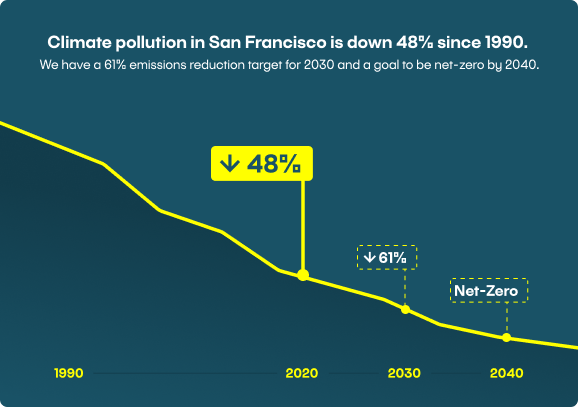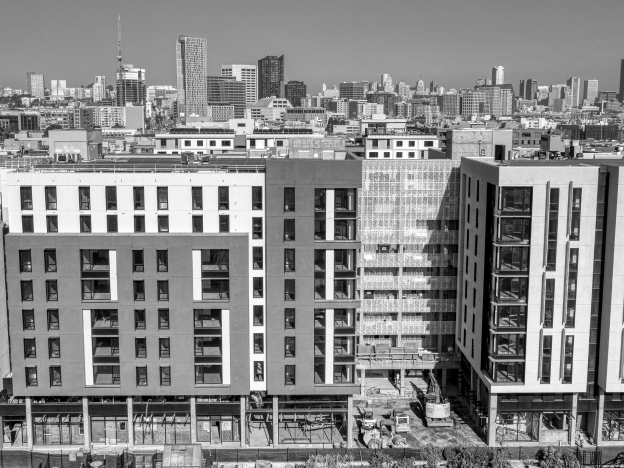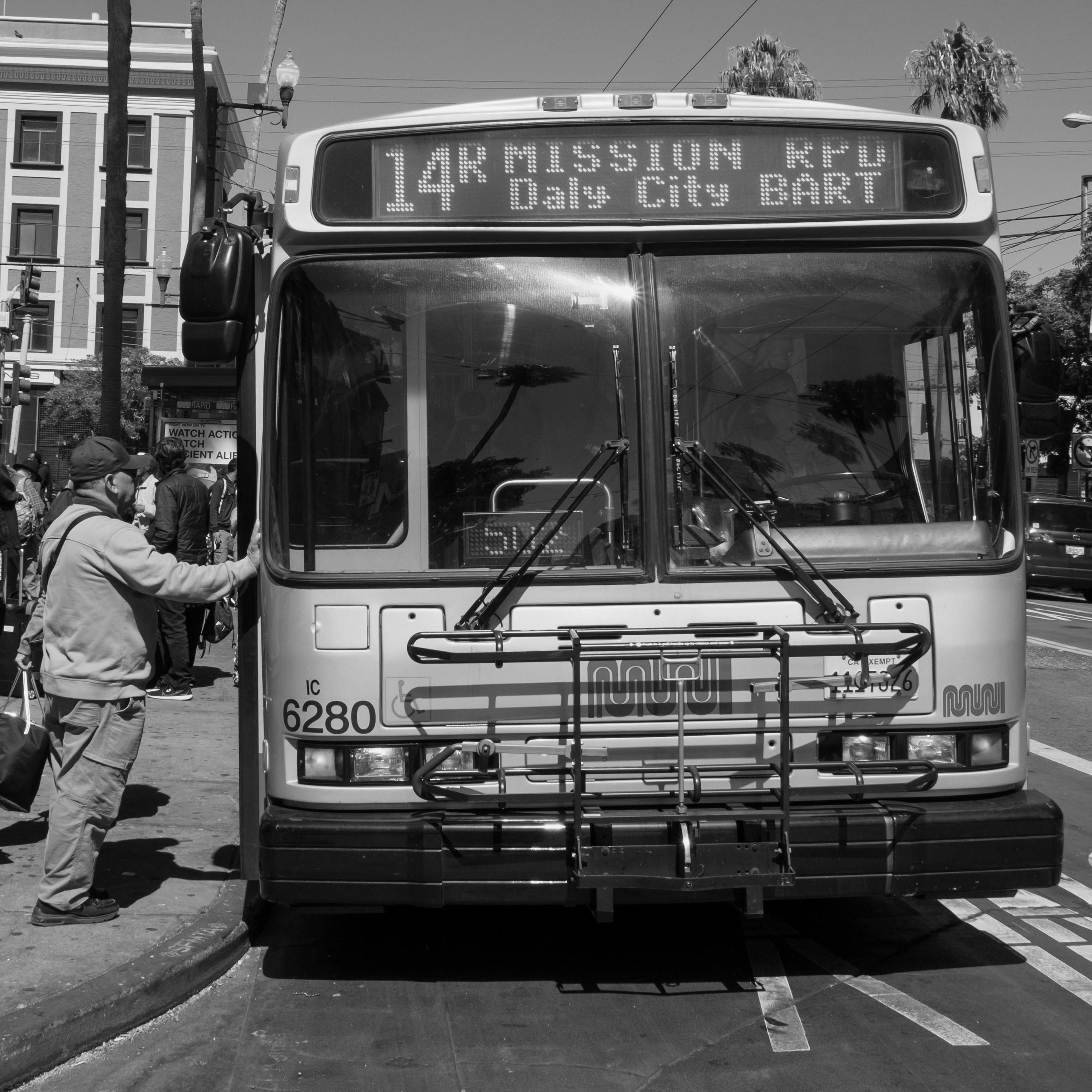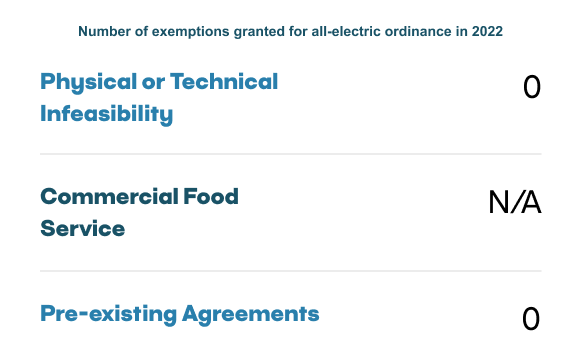

Climate Action Plan Sectors
The Plan is organized into these key sectors.
Recent Achievements
 Building Operations
Building Operations
Natural Gas Ban in New Construction (BO 1)
Enacted the All-Electric New Construction ordinance that went into effect in 2021 to require newly constructed buildings to be energy efficient and all-electric with no on-site carbon emissions. The ordinance is implemented by SF Department of Building Inspections (DBI).
 Transportation and Land Use
Transportation and Land Use
Build a fast and reliable transit system that will be everyone's preferred way to get around. (TLU 1)
SF transit ridership continues to recover strongly - at the fastest growth rate since 2019 - with a total of 158 million passenger trips in 2024.
 Responsible Production & Consumption
Responsible Production & Consumption
Reduce the carbon footprint of the food system by reducing waste, promoting climate friendly diets, and getting excess food to communities in need. (RPC 2)
Diverted over nine million pounds of food waste from landfill while providing eight million meals to underserved communities in 2024 (image credit: Farming Hope)
Implementation Snapshot
The SF Climate Action Plan describes the actions the City and community can take together to tackle the climate crisis. These charts provide an overview of the progress made towards implementation.
Latest Indicators
An at-a-glance overview of the City's progress toward meeting the Climate Action Plan's goals.
Energy Supply
Building Operations







